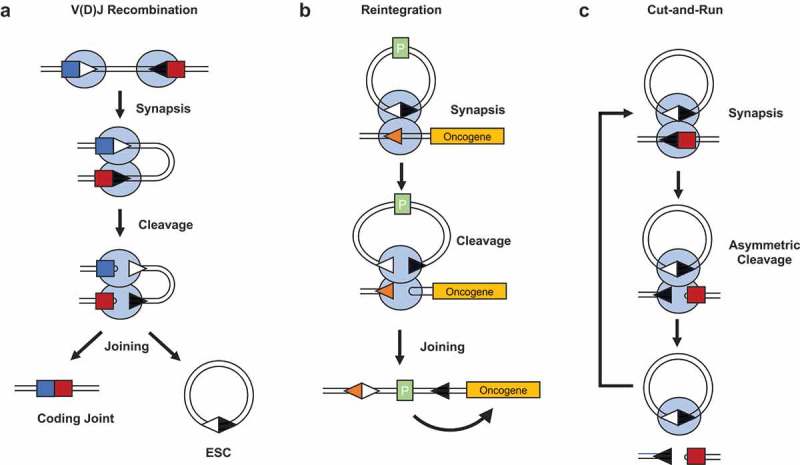Figure 1.

Overview of V(D)J recombination and the mechanisms by which its by-product triggers genome instability. (a). V(D)J recombination occurs between 12- and 23-recombination signal sequences (RSSs) that flank all variable (V), diversity (D) and joining (J) gene segments. The recombination activating gene (RAG) proteins first bind to a 12 and 23-RSS and bring the coding segments together in a synaptic complex. The RAG proteins then catalyze formation of double strand breaks precisely at the RSS-coding segment border, resulting in a post-cleavage complex containing two coding ends and two signal ends, which are then repaired by the non-homologous end-joining (NHEJ) proteins to give a chromsomal coding joint and an extra-chromosomal signal joint on an excised signal circle (ESC). (b). Reintegration involves synapsis between an excised signal circle (ESC) and a chromosomal RSS, which can either be a legitimate RSS or a cryptic RSS (cRSS). A standard recombination reaction occurs, resulting in the reintegration of the ESC back into the genome. (c). The more frequent outcome of an ESC/RSS synaptic complex is the cleavage of the RSS, but not the ESC. This leaves the ESC/RAG complex free to stimulate cleavage at additional RSSs in a “cut-and-run” reaction.
Light blue ovals = RAG1/2 complex; deep blue square = V coding segment; red square = D coding segment; white triangle = 12-RSS; black triangle = 23-RSS; orange triangle = cRSS; P = promoter; ESC = excised signal circle.
